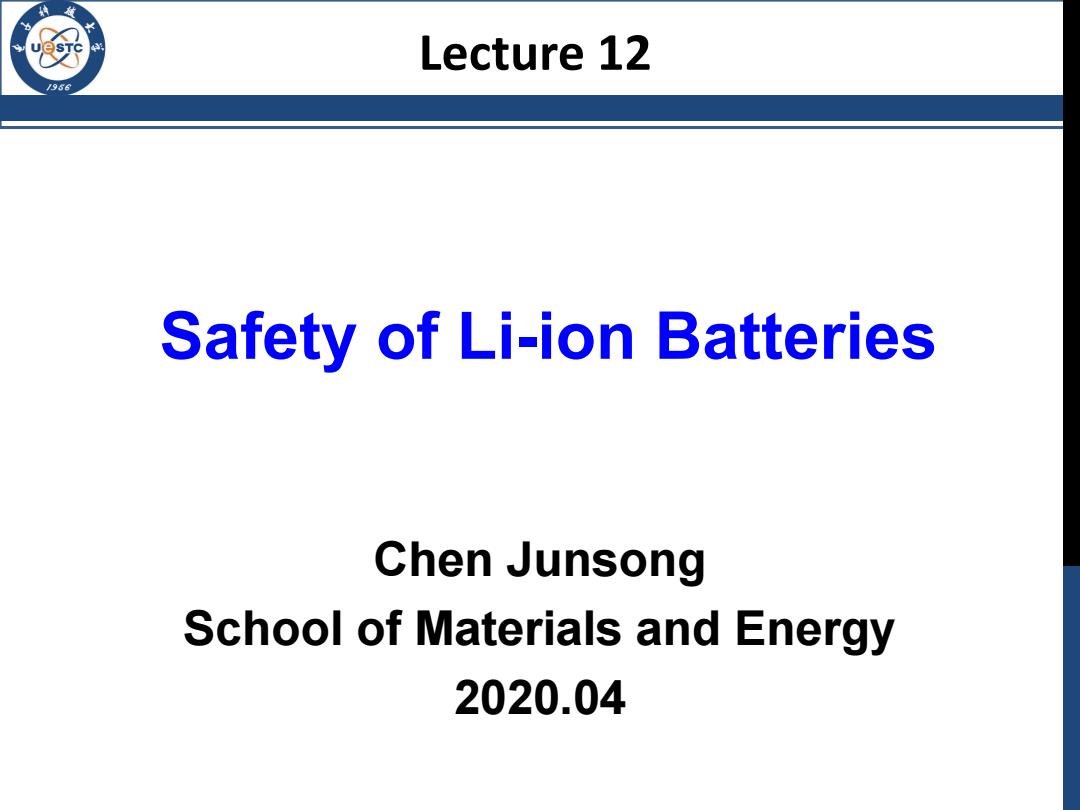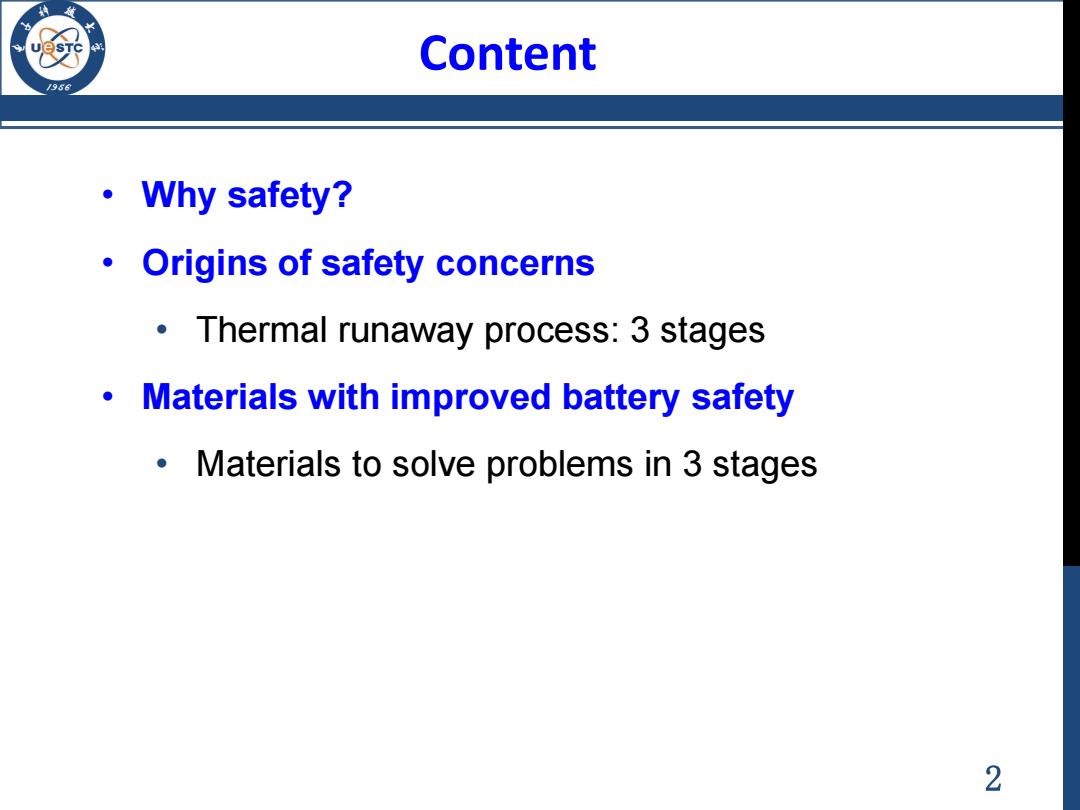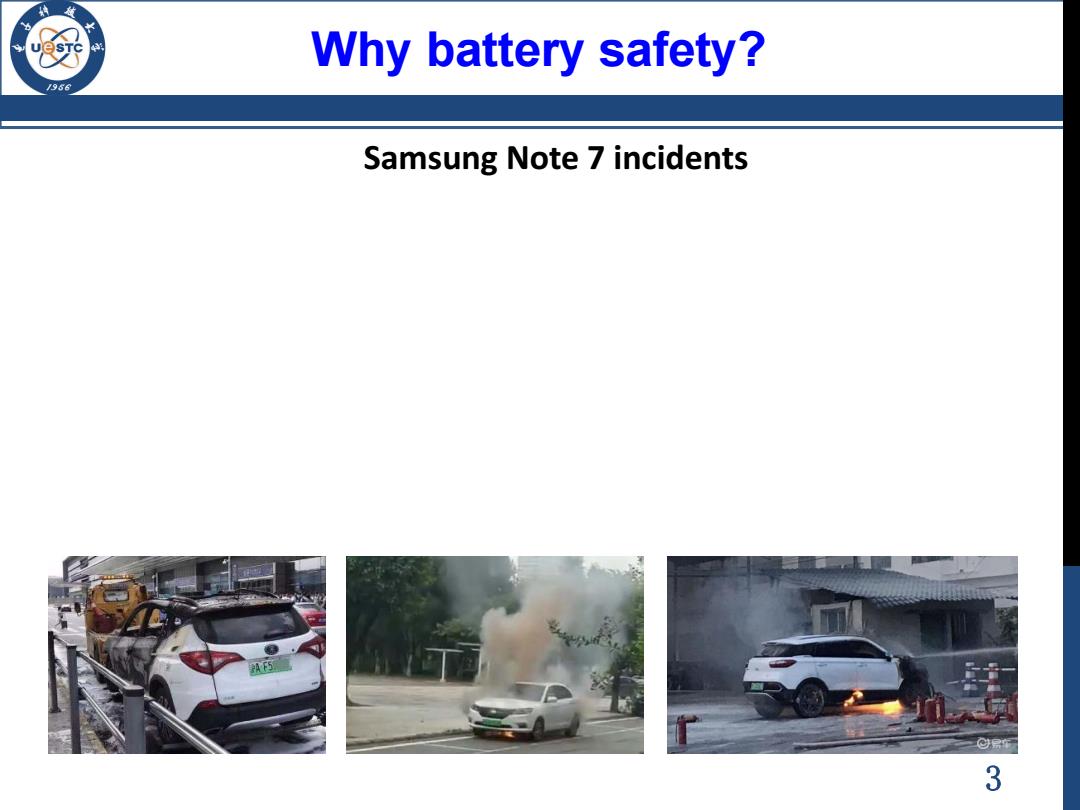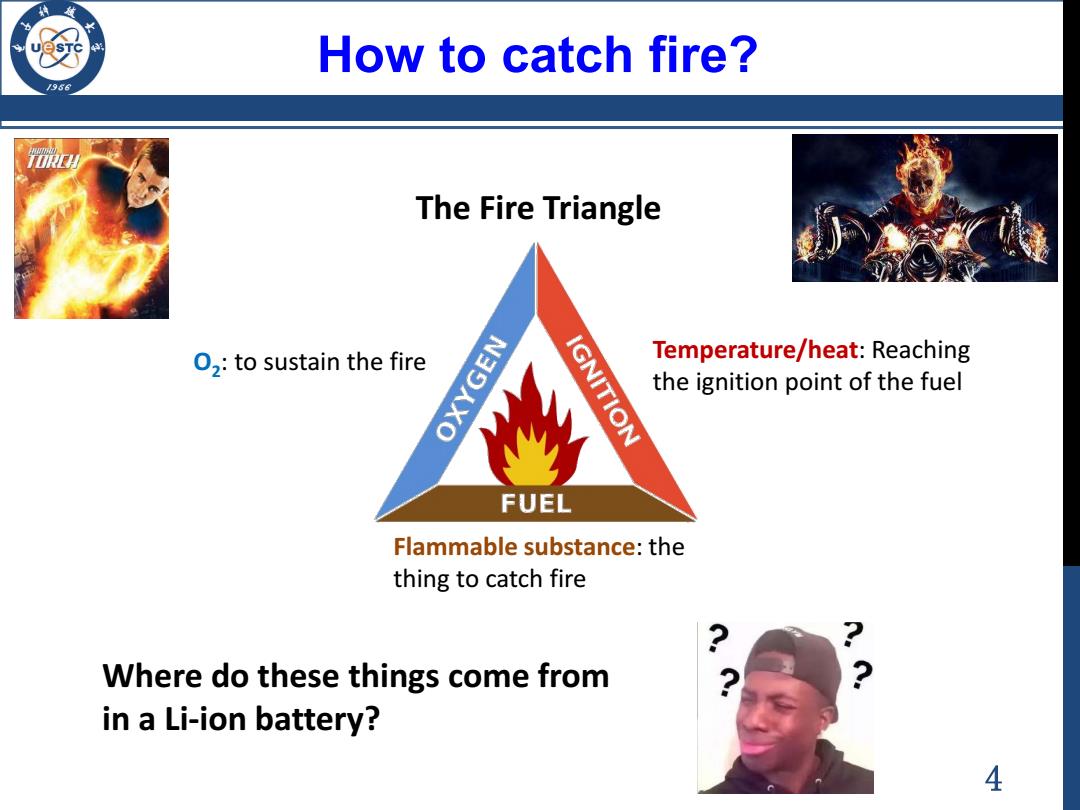
Lecture 12 /986 Safety of Li-ion Batteries Chen Junsong School of Materials and Energy 2020.04
Safety of Li-ion Batteries Chen Junsong School of Materials and Energy 2020.04 Lecture 12

Content /986 ·Why safety? Origins of safety concerns Thermal runaway process:3 stages Materials with improved battery safety Materials to solve problems in 3 stages 2
Content • Why safety? • Origins of safety concerns • Thermal runaway process: 3 stages • Materials with improved battery safety • Materials to solve problems in 3 stages 2

Why battery safety? 1956 Samsung Note 7 incidents PA F5 @层车 3
Why battery safety? Samsung Note 7 incidents 3

How to catch fire? TORCH The Fire Triangle O2:to sustain the fire OXYGEN IGNITION Temperature/heat:Reaching the ignition point of the fuel FUEL Flammable substance:the thing to catch fire Where do these things come from in a Li-ion battery? 4
How to catch fire? The Fire Triangle O2: to sustain the fire Temperature/heat: Reaching the ignition point of the fuel Flammable substance: the thing to catch fire Where do these things come from in a Li-ion battery? 4

Origins of safety concerns SCIENCE ADVANCES REVIEW MATERIALS SCIENCE Materials for lithium-ion battery safety Kai Liu',Yayuan Liu',Dingchang Lin',Allen Pei,Yi Cui2* Samsung Note 7 after the battery The Fire Triangle in a caught fire Li-ion battery O2:To sustain the fire Temperature/heat: Gas release from side Reaching the ignition reactions during charge/discharge OXYGEN point of the fuel IGNITION Thermal runaway due to heat released from side reactions FUEL Fuel:The thing to catch fire The organic liquid electrolyte is combustible 5
Origins of safety concerns Fuel: The thing to catch fire The organic liquid electrolyte is combustible O2: To sustain the fire Gas release from side reactions during charge/discharge Temperature/heat: Reaching the ignition point of the fuel Thermal runaway due to heat released from side reactions The Fire Triangle in a Li-ion battery Samsung Note 7 after the battery caught fire 5